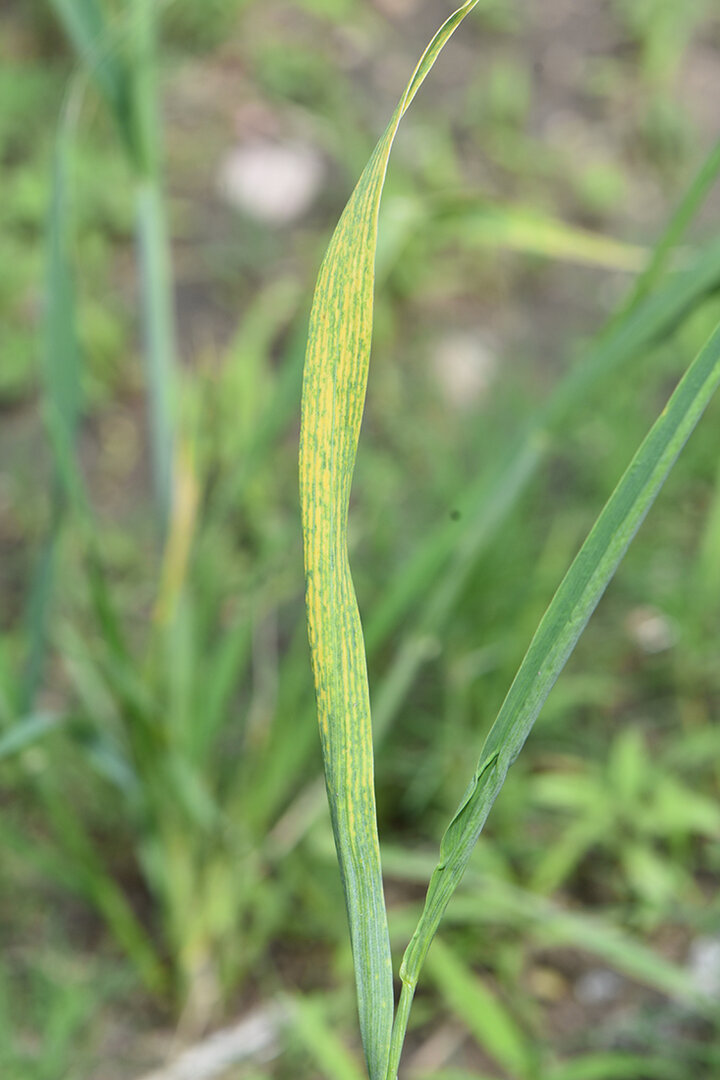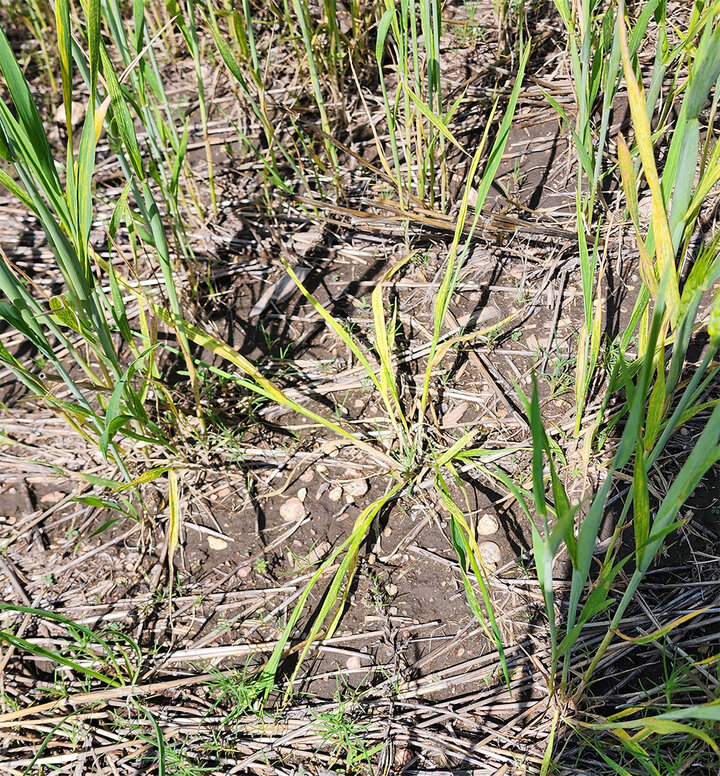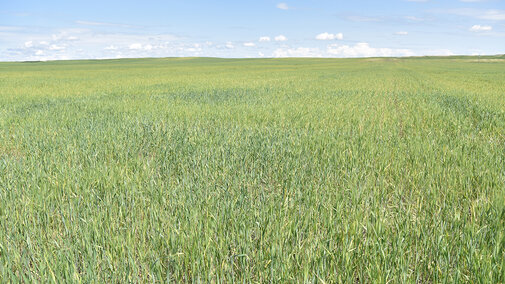On June 15, at a grower’s request to look at his wheat field in Kimball County, it was determined that the entire field had severe symptoms of the wheat streak mosaic disease complex (Figure 1). This complex consists of three viruses, all of which are transmitted by wheat curl mites (WCMs): wheat streak mosaic virus (WSMV), Triticum mosaic virus (TriMV), and High Plains wheat mosaic virus (HPWMoV). WSMV is the predominant of the three viruses.

Symptoms caused by the three viruses are indistinguishable. Typical symptoms are plant stunting and the development of a yellow mosaic pattern of parallel discontinuous streaks on leaves (Figure 2). Severe infections result in lateral growth of tillers (Figure 3). Severity increases when co-infections occur, and total loss of a wheat crop due to the disease complex is not uncommon.
Risk Factors for the WSMV Disease Complex
- The highest risk is volunteer wheat that emerges in wheat fields just before harvest following a hailstorm. The hail shatters grain that is mature enough to germinate. Following germination, WCMs move from the maturing wheat crop to the young volunteer and both the mites and virus multiply on it throughout the summer. Volunteer wheat in summer crops, such as sunflower, also adds to the risk of WSMV.
- Crops or grassy weeds that are hosts of WCMs or WSMV also pose a risk if they are allowed to grow past fall wheat emergence. Crops other than wheat that are hosts of WCMs or WSMV include corn, rye, oats, barley, sorghum and foxtail millet. Grassy weeds that are hosts include jointed goatgrass, downy brome, sandbur, crabgrass, barnyardgrass, stinkgrass, witchgrass and green foxtail.
- A cool, wet summer favors growth of volunteer wheat and other hosts of WCMs or WSMV, as well as survival and reproduction of WCMs. It also prolongs the period of growth of summer crops that are hosts of WCMs or WSMV, resulting in the overlap of these crops with fall planting of wheat.
- A prolonged fall with above-normal temperatures. During such a fall, WCMs as well as WSMV remain active, reproduce and spread for a longer time and at higher levels compared to a normal fall, causing severe damage to the wheat crop. This damage is exacerbated if a warm fall is followed by a mild winter.
- Early planting of wheat poses significant WSMV risk. It allows more time for WCMs to infest wheat, multiply on it and transmit WSMV to it, as well as more time for WSMV to multiply within the wheat crop during favorable warmer temperatures.

Management of the WSMV Disease Complex
- Controlling volunteer wheat, especially pre-harvest volunteer that emerged in wheat fields or summer crops, is critical. Post-harvest volunteer should also be controlled. Volunteer wheat should be completely dead at least two weeks before fall planting.
- Control grassy weeds in and close to fields in which wheat will be planted in the fall.
- Avoid planting wheat too early. Instead, plant at the recommended date for your area.
- Avoid planting wheat next to late maturing summer crops that are hosts to WCMs or WSMV, such as corn, foxtail millet, sorghum or small grain cover crops.
- Plant wheat varieties with greater resistance or tolerance to WSMV that are adapted to your area or region. Although most varieties grown in Nebraska are susceptible, a few have good resistance or tolerance.
- Plant high risk fields last; these are fields adjacent to grassy weeds and late maturing host crops, such as corn.

